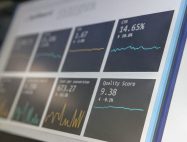To give traders the chance to trade virtual coins and other financial instruments, the market must provide liquidity, which in turn provides access to fast trading with low spreads. This is achieved by professional market makers that provide the markets with liquidity from their own resources.
In this article, we will talk about what liquidity is, what role a liquidity provider plays in forex trading, issues of low-liquidity markets with large trading volumes, and which asset pairs are considered the most liquid.
What is a liquidity provider?

Liquidity is one of the most important indicators in financial markets – both forex and stocks. This indicator determines how quickly it is possible to buy or sell a commodity on the exchange without significant loss of value, provides greater price stability, and thus facilitates trading. The faster a trader can sell an asset. The more liquid the market is considered to be. This is important for businesses that want to provide clients with quality brokerage services to their clients. Finarm helps companies find providers that offer high liquidity for trading.
This indicator is sometimes confused with capitalization, but the difference between the two is colossal. Capitalization is the total value of all the same assets (stocks or currencies) on the market, while liquidity is the aggregate of orders on a particular exchange.
Classification of markets
There are highly liquid and low liquid markets. Let us list the main characteristics of the liquid market:
- High speed of transactions. Operations usually take place in one business day, but sometimes they can take up to 3 days.
- Low spreads. The difference between the buying and selling prices of highly liquid assets is rarely more than 5 basis points.
- Low asset volatility. This means that when there is a large volume of buying or selling, the price changes very little. In other words, high liquidity makes assets stable. In markets with low liquidity, the price of a coin can change 5% or more in a day with low trading volume.
- Dense order books also maintain price stability and allow you to buy/sell large volumes that only slightly affect the price of the asset.
- Minimal or no delays. High liquidity usually correlates with high demand for assets, so orders are executed quickly, making trading more efficient and easier.
Note. The term “liquidity provider” is often favored by users of decentralized exchanges (DEXes) operating in an ecosystem known as DeFi (decentralized finance). The fundamental difference between DeFi and the FX is that any user can provide liquidity without restrictions. Crypto enthusiasts add their assets to the liquidity pool and receive passive income.
Before the digital times, the provision of liquidity was only available to government and large private organizations, which had to meet the stringent requirements of regulators and comply with the high standards of the interbank sector. With the development of the internet, this has become possible for small investors as well. Therefore, today not only large banks and funds but also brokers around the world can become providers. On our website, Finarm, you can find liquidity providers for your business.
What are liquidity providers on Forex?
Forex is the most liquid among the exchange markets. Its total daily trading volume exceeds $6 trillion. By this indicator, Forex surpasses even the lending industry.
A liquidity provider helps to trade currency pairs in the interbank market. The market maker’s role in the foreign exchange market is played by large commercial banks, mutual funds, and private investors, who often work in these organizations. Often participants become intermediaries in transactions and open brokerage firms.
Brokers tend to have higher spreads than major liquidity providers, but the requirements for clients are lower since companies are willing to work with non-professional clients and provide access to trading even with small amounts of investment. Such clients normally would not have been able to access the liquidity pool of the largest peer-to-peer providers, but thanks to intermediaries, this has become possible. The presence of such large players at a brokerage company speaks of its reliability.
Higher liquidity
Highly liquid markets include those that handle shares, crypto assets and currency transactions that are made in one day, rarely in up to three days. On Forex, transactions are made around the clock, seven days a week, which makes it stand out even compared to the stock market, where transactions are processed only during business hours on weekdays. This means that if you bought security on Friday evening before the close of trading, then you can sell it no earlier than Monday morning when trading resumes.
The most liquid trading pairs
To measure the liquidity of a currency pair, it is customary to use daily trading volume since that is possible only with high demand and liquidity. Therefore, to compile a rating, trading pairs are ranked according to this indicator. Let’s find out which currency pairs are considered the most liquid.
EUR/USD
The absolute leader among all assets in any market. The share of the euro/dollar currency pair reaches 28% of the total trading volume of the foreign exchange market, and the minimum spread is 0.25 points. Traders trade more than half a trillion dollars in the EUR/USD currency pair every day.
USD/JPY
Next is the trading pair of the dollar against the Japanese yen, which accounts for 13% of the total volume of transactions. The minimum spread is about 0.5 points, which is noticeably higher than that of the EUR/USD pair.
GBP/USD
The pair with the British pound against the dollar occupies the third position in the rating, and it accounts for 11% of the daily trading volume.
Low liquidity
An example of a low-liquid asset would be real estate. A transaction for the purchase and sale of real estate can take from several days to a month or even more. The complexity of the procedure must also be taken into account.
Firstly, even finding a suitable offer on the market is a rather laborious process. This is followed by real estate appraisal and negotiation. It is necessary to check that all documents are in order. Only after this is a purchase transaction concluded, which may last several days until the rights to the actual purchase are finally transferred to the buyer.
Disadvantages of low-liquid trading pairs
Trading in markets with low liquidity carries increased risks for traders, associated primarily with high volatility. A good example would be crypto assets, the rate of which can change by 50 percent or more within a few hours. Let us analyze why a low-liquid market is dangerous.
High spread
Due to the large difference between the buy and sell prices, a trader will not be able to quickly exchange a currency or other asset at or close to the market rate. This is caused by the low number of buy or sell orders. For this reason, analysts recommend not to trade during the holidays.
Delays in order execution
Pending transactions may not be executed for hours, and delays may reach several days, depending on the trading activity on the exchange. The lower the liquidity, the longer the delays can be, especially if you have placed a large order.
Slippage
Another factor that increases trading risks is order slippage. Due to lack of liquidity, buy or sell orders may not be executed if a trader makes pending deals or closes in the negative direction.
For example, you bought the Canadian dollar against the Australian dollar and set your stop loss at -10% of the purchase price. Important news comes out, and traders begin to actively sell CAD, making many deals, resulting in slippage due to low liquidity. Your deal is closed not at -10%, but at -30%, and the losses triple.
Who supplies liquidity and provides quotes to the market?

Financial institutions and institutional investors can act as liquidity providers: these are exchanges, banks, mutual funds, etc. and forex brokers such as Bank of America, Barclays, Morgan Stanley, Citibank, Deutsche Bank and others. Individuals also have the right to become liquidity providers if they meet the necessary requirements – the law does not regulate this criterion. They just need the appropriate licenses and large enough start-up capital.
The key feature of these market participants is that they must continually provide liquidity regardless of conditions, even if they incur losses. In other words, their business models do not depend on the value of currencies, crypto assets or securities on the exchange.
Note. The term liquidity provider is often used to refer to a market maker. In fact, these participants perform similar tasks, but they may have different business models.
The goal is to provide traders with liquidity pools so that they can exchange one asset for another with minimal delays and financial costs while the market maker ensures the execution of orders and helps to increase trading volumes, and makes the market more active. Therefore, not only market makers can provide liquidity and increase the volume of forex transactions. Banks, Forex brokers, exchanges, funds, other financial institutions and individual traders can act as both a market maker and a liquidity provider.
A market maker is an active market participant, meaning that they stand ready to regularly buy and sell assets at a quoted price on a regular basis. An example of a market maker is banks that are willing to allow their customers access to trade currencies at a quoted price. The banks charge commissions for their services, which are expressed as the difference between the buying and selling rates or spread. In this way, they simultaneously participate in the trading process and provide liquidity.
For example, decentralized exchanges such as Uniswap and 1inch act as automatic market makers, hence the name – AMM protocols. They provide traders with access to liquidity pools provided by the DEX users themselves.
Without liquidity providers, like market makers, it would be impossible to make transactions on exchanges. Let’s say you want to buy 100 lots through Forex brokers, but this requires someone to sell them to you. That is, you need the asset you are looking for to be in the liquidity pool. Another trader can post a counter order. In this case, you will successfully close the trade and receive 100 lots. With a small volume of applications, problems with the exchange, most likely, will not arise.
But if an investor wants to buy a high number of currencies, for example, 100,000 or a million lots, then the broker may not have enough funds. Then a liquidity provider comes to the rescue – an exchange or fund with a sufficient amount to process forex transactions. To provide more liquidity, brokerage firms connect multiple liquidity providers.
The set of orders affects the spread – the denser the order book, the lower the spread and the smaller the difference between prices. The quotes are sent to the brokers by liquidity providers through special programs that act as intermediaries between them. Different brokers have different quotes. This is because they only come from those providers with whom the firm has a contract.
Note. Traders sometimes use the difference between exchange rates for inter-exchange arbitrage. This allows you to make a profit by buying an asset from one broker at a lower rate and selling it to another at a higher rate.
Types of liquidity providers
Liquidity provision means that the market maker must act as both buyer and seller. One of the main tasks of a provider is to provide price stability for assets and facilitate trading.
So-called “Tier 1” includes the largest liquidity providers who are at the top of the rating. Among them are internationally renowned banks and funds such as Bank of America, Barclays, BNP Paribas and Morgan Stanley. This means that the liquidity pool provided by them will provide traders with the highest liquidity and virtually zero spreads. This means that it will be easier for traders to make a profit on Forex trades.
“Tier 1” providers generally provide their clients with an extended range of services, which includes access to derivatives markets and financial derivatives such as futures or CFDs.
Tier 2 liquidity providers are secondary companies that mediate between customers and banks and act as market makers.
Foreign exchange market liquidity
The Forex market is an international market where major banks, exchanges and government organizations operate, which is why it has the highest liquidity. Note other factors that make Forex so liquid:
Widespread use of national and foreign currencies
National currencies are widely used as a means of payment for buying goods and paying for services. For example, you cannot buy a car or property with securities because there is not enough liquidity. Actually, this is technically possible, but because of the complexity, the process will take a long time, not to mention the fact that the services of intermediaries are required to complete the transaction, which increases the cost.
Some consumers keep their savings in foreign currency and use it to shop in foreign marketplaces. The higher the demand for foreign goods, the more active users exchange currencies, making the market more liquid.
Global liquidity
Markets also differ in basic mechanics: the foreign exchange market is an interbank market where transactions are made all over the world. For this reason, it is considered decentralized and difficult to regulate. The stock market, for example, is considered an exchange market because stocks are only traded on exchanges or through licensed brokers. Currencies can be bought not only with the help of brokers but also from banks and exchanges.
24/7 Trading
Unlike stocks and commodities on the stock exchange, forex trading is available 24/7. Traders can transact at any time of the day or night, including weekends and holidays.
This is another Forex advantage, as there is no price gap – the difference between the price at the end of a trading session and the price at the opening on the next business day. In the stock market, you can often see the price of an asset plummet by dozens of basis points at the opening of trading. This is due to the fact that many traders sell the stock(s) as soon as worrying news is released over the weekend.
Conclusion
A liquidity provider operates as a market maker and supplies traders with quotes. If it turns out that the liquidity pool is insufficient to satisfy bids, market volatility is high and spreads between prices reach large values, making trading difficult and creating additional risks for trading participants.










